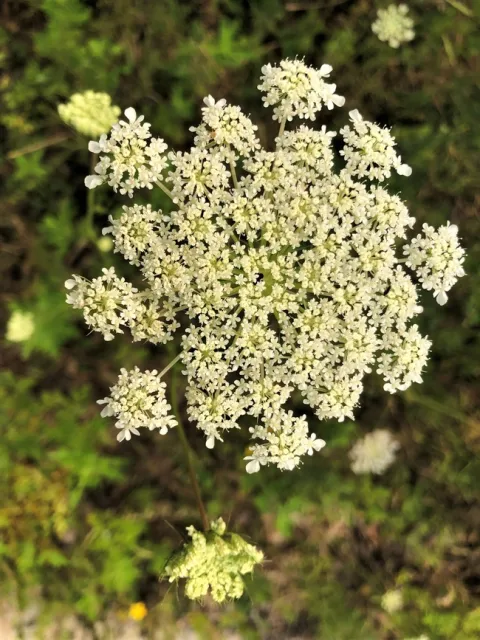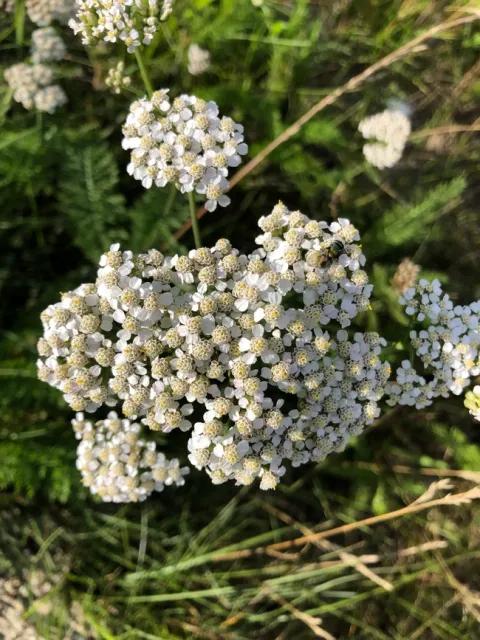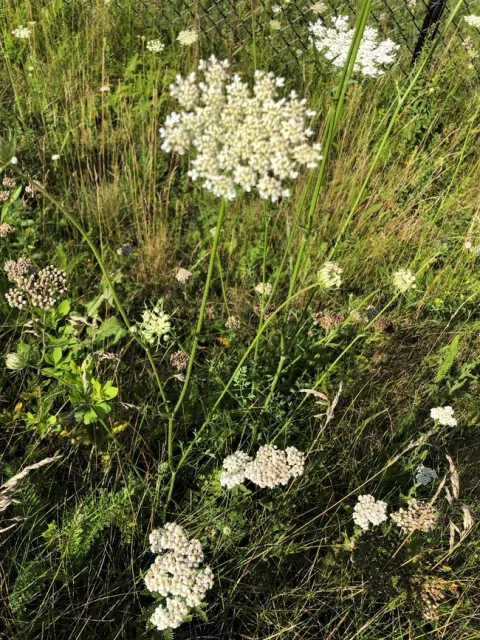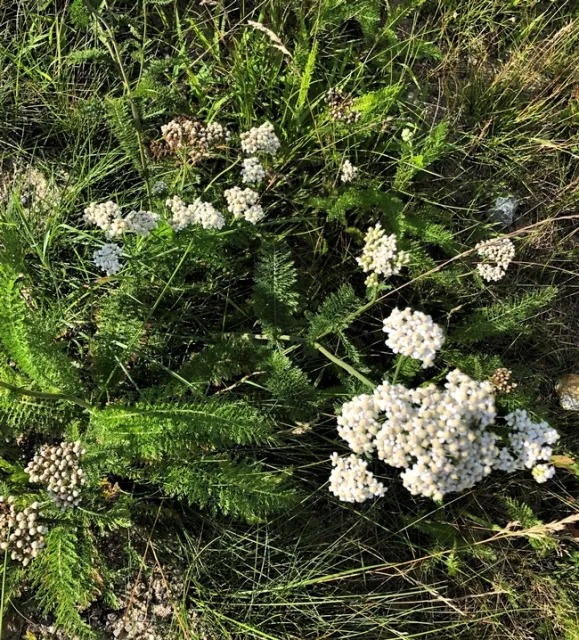Last summer, while visiting Maine, I was drawn to the ubiquitous Queen Anne's Lace (Daucas carota) wildflowers. Native to temperate areas of Europe and southwest Asia, Queen Anne's Lace now grows wild in California, and in most of the United States. It is prolific in Maine. I always imagined that Queen Anne's lace and common yarrow (Achillea millefolium), looked very similar, so I set out to photograph the two plants in their natural settings. My dog and I tromped through field after field, enjoying the abundance of wildflowers present in July in an area which receives summer rain.

From a distance the plants look quite similar. It turns out however, that upon close inspection there are important differences between the two plants. While they both sport tiny white flowers, Queen Anne's Lace inflorescence is “lacey” (thus the name!), and the flowers of a common yarrow plant resemble tiny popped popcorn.

Queen Anne's Lace is in the carrot family, Apiaceae, and is the parent of cultivated carrots (Daucas carota subsp. sativa). The inflorescence is umbel-shaped and looks rather like a snowflake. The leaves of Queen Anne's Lace are fern-like and look very much like those of cultivated carrots. Queen Anne's is native to Europe and was brought to North America by colonists who used it as a medicinal plant.
Common yarrow is in the sunflower family of Asteraceae. The inflorescence is flat, and at the center of each tiny white ray flower are even tinier beige disk flowers. Indigenous Communities used yarrow as an astringent, mild laxative, to treat tooth and earaches, as an analgesic, as a remedy for head colds, for healing cuts and abrasions, to reduce pain or fever, and as a sleep aid.

Both of these plants can cause skin rashes, which I learned through miserable experience. Hives developed slowly, but I was unaware of the plants toxicity when I walked my dog through the fields. He and I would both brush against the plants, and then I would pet and cuddle with him. By the time I left Maine, every inch of my body from my feet to my shoulders was covered in extremely itchy, raised, red hives. To make matters worse, it turns out that Queen Anne's Lace looks nearly identical to poison hemlock (Conium maculatum), which is also a member of the carrot family Apiaceae and grows under similar conditions. All parts of the poison hemlock plant are toxic, and ingesting it is deadly. The best way to tell the difference between Queen Anne's Lace and poison hemlock are the height of the inflorescences, which typically grow twice as tall as Queen Anne's Lace, and the foliage, which looks more fern-like than carrot foliage. One can also look for the tell-tale purplish blotches on the stems of poison hemlock. Queen Anne's Lace does not have these blotches.

Lessons learned: 1) Know the facts about the natural environment you are wandering through, especially if it is new and unfamiliar; 2) Read about plants you are interested in getting close to, in case they happen to be toxic; and, 3) When you want to send a photo to a friend of your horrible rash on a body part you don't want the entire world to see, don't hit the “Share Your Story” button – that's a really bad idea.

